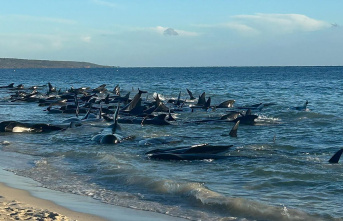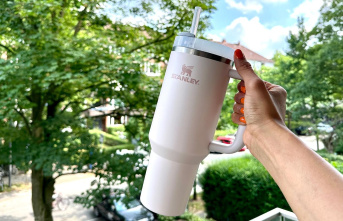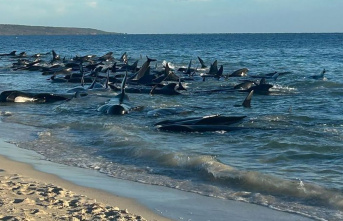The situation in the flooded areas of south-eastern Australia did not ease over the weekend either. Prime Minister Anthony Albanese said he was concerned during a flight over Rochester in northern Victoria on Sunday.
Albanese wrote on Twitter that he had "seen firsthand the rising water damaging homes and businesses," along with a photo taken from a cockpit. He announced financial aid for the flood victims there and in the other flooded regions in New South Wales and on the island of Tasmania.
A new storm area is approaching
The first person to have died from the recent floods, a 71-year-old man, was discovered in Rochester on Saturday. The situation in northern Victoria continued to deteriorate on Sunday. According to the AAP news agency, the authorities issued new flood warnings late in the evening (local time). Accordingly, other rivers threatened to overflow their banks, especially in the area around Rochester. For the entire east of Australia, the weather service also predicted new storms and a broad rain front in the middle of the week - a new storm area was just forming, it said.
Tens of thousands had already been asked to leave their homes in the past few days. There were even evacuation orders for places that were particularly at risk. The emergency services have so far rescued dozens of people from or from the floods. "It is heartbreaking to think that this is the third or fourth time in 18 months for many people that their lives have been cut short by a natural disaster of this magnitude," the Australian news agency quoted the Prime Minister, who was meeting with Victoria's Prime Minister Daniel Andrews sounded out the situation on site.
Australia's east coast has been hit by exceptionally heavy rain and flooding on several occasions this year. At the beginning of July, areas in the metropolis of Sydney, the capital of New South Wales, were flooded. In March, too, there were severe floods around the metropolis and in large parts of the state as well as in Queensland. Heavy rains in the past few days had caused rivers to burst their banks and flooded entire areas.
In Victoria, the north was particularly affected, above all the area around Shepparton around 180 kilometers north of the metropolis of Melbourne. In photos from Shepparton, only the road signs were sticking out of the water, and a man was kayaking along a road. Other footage showed rescuers wading in the water carrying children from the flooded areas. Residents and military personnel laid out sandbags in an attempt to stop the flooding.
Devastating natural events are increasing
According to the AAP, the authorities had already warned on Saturday that it is now too late for many residents in the north of the state to leave their homes. The worst is not over yet, the media said. Victoria's head of government said some families may not be able to return to their homes "for an extended period of time". Even if the floodwaters recede, there will still be so much left that houses will be uninhabitable for a long time. Some of the suburbs of Melbourne, the capital of Victoria, were also knee-deep in water.
A report by the Intergovernmental Panel on Climate Change (IPCC) from February 2022 assumes that Australia will be hit by devastating natural events even more frequently in the future. Stronger heat, more dangerous fires, more droughts and floods, higher sea levels and drier winters are to be expected.












